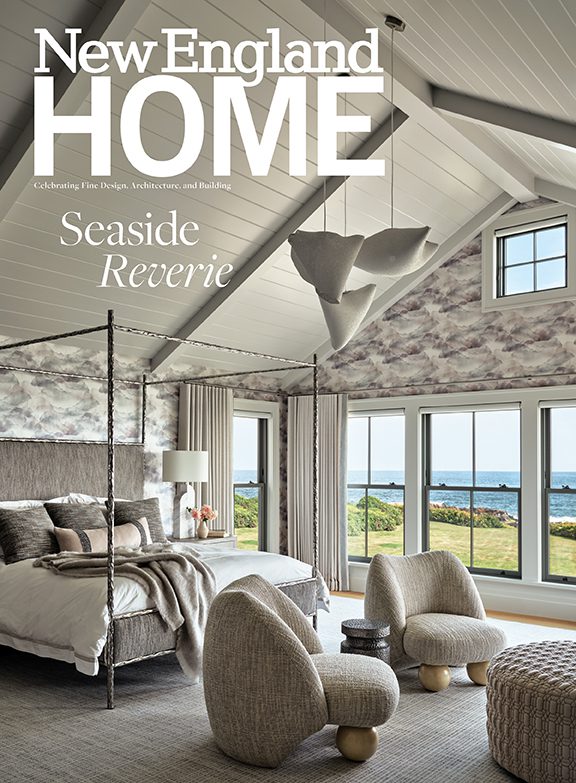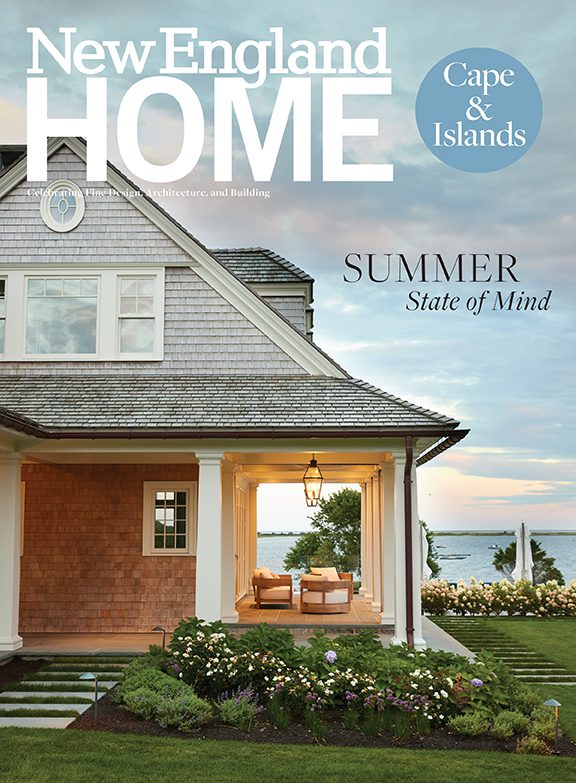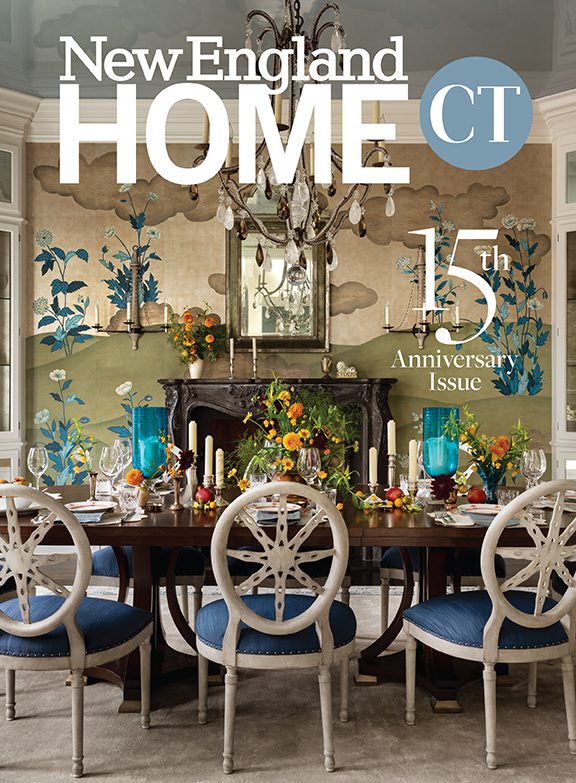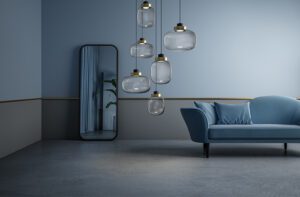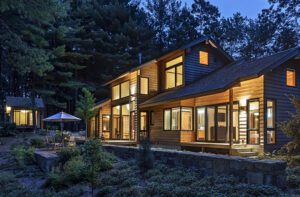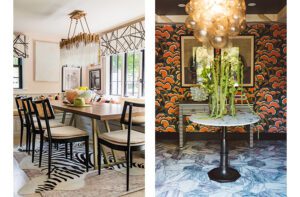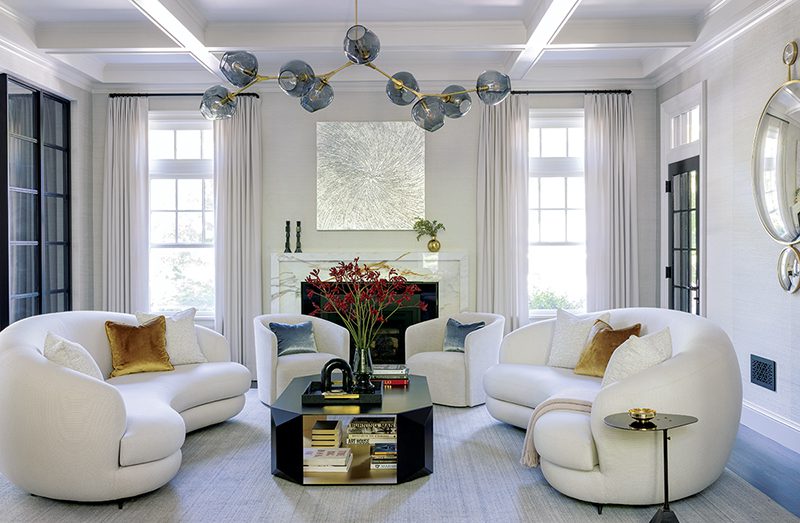Safe and Sound
January 6, 2011
Text by Louis Postel
Picture it: three boys playing tag in a wide alley. They dart between garbage cans and cardboard boxes, hiding in long, late-afternoon shadows. “Home!” cries a blond tyke. Breaking away from the others, he gloms on to a utility pole, embracing the boys’ base as though it were the last marble column left standing in the sack of Rome. “Home . . . safe!” If only that deep sense of safety were so easy to come by for us grown-ups. What makes us feel safe, like we’re truly home? We often hear people say, “This place is my sanctuary”—the adult equivalent of that utility pole in the alley. Hug it and it hugs you back. In short, that’s the designer’s biggest challenge: to create a home that holds the client in its wide embrace.
Perhaps the most marvelous thing about the restoration field is that it brings scary, broken-down homes—places you wouldn’t want to get near—back to life. Indeed, they can even hug you back. Pieter Roos, executive director of the Newport Restoration Foundation, deserves a lot of credit for resuscitating one of the largest collections of eighteenth-century buildings anywhere in the United States. “Poverty preserves,” Roos writes in his just-published book, Extraordinary Vision: Doris Duke and the Newport Restoration Foundation. In 1960s Newport, only the curious or very well informed trod the back streets of Newport, where “rank upon rank of dilapidated wooden buildings hid under the accumulated crust of centuries of neglect, their true faces completely obscured.” Under Roos’s guidance, the foundation has completely restored eighty-three buildings and turned Newport into a “world-class preservation showcase” according to the National Trust for Historic Preservation, which gave the Newport group its Trustees Emeritus Award for Excellence in a ceremony held in Austin, Texas, last October.
While some homes beckon to us from beneath the rubble, other homes lie deep down within us, vague ideas waiting to be coaxed out by a savvy designer. “People don’t trust themselves in general. And they particularly mistrust their artistic sides. I try to influence clients to trust themselves while letting me help them think differently,” says Keith Musinski, former director of interiors for Siemasko + Verbridge who now runs his own firm, Equilibrium, in Beverly, Massachusetts. “I become their design muse, but they have the ownership. It’s always gratifying for a designer to witness a cocooning couple turn to each other and exclaim, ‘Why couldn’t we have figured this out ourselves?’ ”
Brent Zeigler of FourPly Studio in Boston makes a specialty of helping clients arrive at such exclamation points. Case in point: his work for a Back Bay couple who wanted a formal dining room they planned to use only a few times a year. They also had a new baby who would soon be in need of play space. Zeigler’s unusual but smart solution was to design a built-in banquette the length of one dining room wall. The child opens the upholstered seats one Sunday morning, and voila—there are her dolls, blinking and groggy from being kept up during her folks’ dinner party the night before.
Unique detailing certainly plays a key role in transforming a mere house into a haven. “The most efficient way to build a shelter is a box. That’s why detail is everything,” says Mike Connor of Connor Homes as he leads a visitor on a tour of his 150,000-square-foot plant in Middlebury, Vermont. An interior arch with lovely inlay patterns is almost ready for the paint room; when it eventually arrives at the job site, the massive piece will snap into the walls without a hitch. Connor points out one of the computerized saws in action. These high-tech tools appear to signal a new era, or perhaps the return of a former one. “In the ’30s and ’40s people started giving up on the idea of traditional, labor-intensive detailing. It was just too expensive, everyone thought. Now it’s possible to have it again, but by computer.” As the ultimate sign of approval, the Winterthur Museum in Delaware has teamed with Connor to create a line of houses based on its archives: the Winterthur Country Home Collection. The first models in the catalogue include the Hampton Court, the Mordington, the Gate House and the Hottenstein.
Trade Secrets caught up with interior designer Elizabeth Brosnan Hourihan of Carpenter & MacNeille in Essex, Massachusetts, as she waited in a client’s driveway for a van of newly acquired art. Buying original art makes some of her clients anxious, she says. “They feel it’s only for the very rich or very educated, not for them.” One of New England’s most knowledgeable designers, Hourihan recalls her own anxious experience with original art—in the form of the Greek Parthenon. There she was, as part of a program at Christie’s London, writing a paper on that timeless, bone-white cradle of Western design and architecture, the utility pole our civilization clings to even now. And what did Hourihan discover? The Parthenon was a replica. Those oh-so-clever ancients had actually copied in marble form a wooden original that had been destroyed in the Persian invasion in 480 B.C. No wonder clients are nervous about distinguishing between the real, the fake and the faux!
What, then, makes a home a sanctuary? A sense of classic proportions, respect for fine craftsmanship and attention to detail surely have something to do with it. But there’s a less tangible ingredient, too: something unique to the homeowner that makes things feel just right. Designers and architects specialize in defining that special something for each of their clients. With them as our guides, we can all find our way safely home.
Share
![NEH-Logo_Black[1] NEH-Logo_Black[1]](https://b2915716.smushcdn.com/2915716/wp-content/uploads/2022/08/NEH-Logo_Black1-300x162.jpg?lossy=1&strip=1&webp=1)
